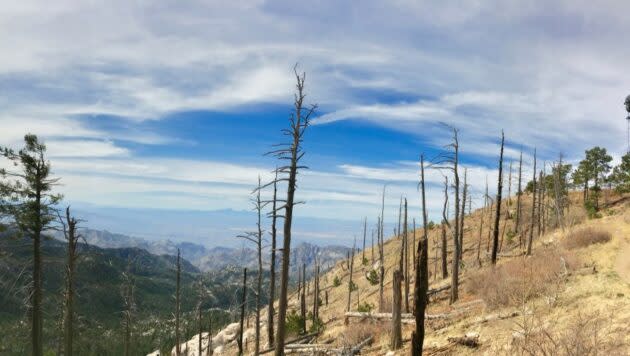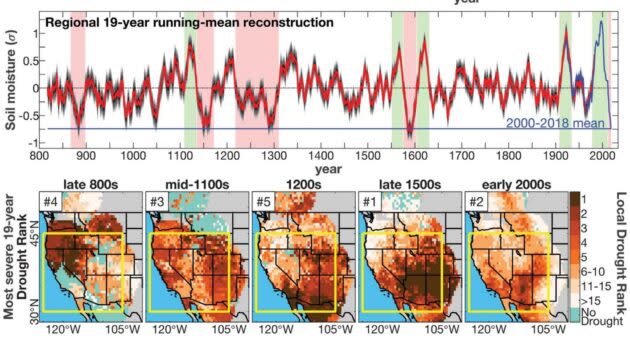Climate experts say the past 19 years qualify as a megadrought for western U.S.

A comparison of weather records since 2000 with similar time frames in past centuries has led researchers to conclude that we’re in the midst of a megadrought of historic proportions.
The assessment draws upon tree-ring data from nine Western states, stretching from Oregon and Idaho down through California and New Mexico, plus part of northern Mexico. The patterns in the tree rings served to track annual soil moisture going back to the ninth century.
Researchers saw evidence for dozens of droughts across the region over the centuries, but four periods of extreme aridity stood out, in the late 800s, the mid-1100s, the 1200s and the late 1500s. The fourth megadrought, which lasted from 1575 to 1603, was the worst of the bunch.
Since then, there have been no droughts on that scale. Until now.
In this week’s issue of the journal Science, the research team reports that the 19-year period beginning in the year 2000 has been almost as dry as the worst 19-year period of the 1575-1603 megadrought, based on soil moisture readings.
“We now have enough observations of current drought, and tree-ring records of past drought, to say that we’re on the same trajectory as the worst prehistoric droughts.” study lead author Park Williams, a bioclimatologist at Columbia University’s Lamont-Doherty Earth Observatory, said today in a news release.
The four earlier megadroughts were purely natural in origin, but the research team’s computer models suggest that warmer average temperatures associated with human-caused climate change are pulling moisture out of the ground, intensifying the soil-drying effect. About half of the pace and severity of the 2000-2018 drought is due to the rising temperatures, the researchers say.
“It doesn’t matter if this is exactly the worst drought ever,” said study co-author Benjamin Cook, who is affiliated with the Lamont-Doherty Observatory as well as NASA’s Goddard Institute for Space Studies. “What matters is that it has been made much worse than it would have been because of climate change.”
The records show that the previous megadroughts all lasted longer than 19 years, and that conditions during those periods got worse than they are today. Another ameliorating factor has to do with a change in weather patterns that provided some relief for the West over the past couple of years. However, if temperatures keep warming, as climatologists expect them to do, history may not be on our side.
“Because the background is getting warmer, the dice are increasingly loaded toward longer and more severe droughts,” Williams said. “We may get lucky, and natural variability will bring more precipitation for a while. But going forward, we’ll need more and more good luck to break out of drought, and less and less bad luck to go back into drought.”
In addition to Williams and Benjamin Cook, the authors of the Science study, “Large Contribution From Anthropogenic Warming to an Emerging North American Megadrought,” include Edward Cook, Jason Smerdon, John Abatzoglou, Kasey Bolles, Seung Baek, Andrew Badger and Ben Livneh.

